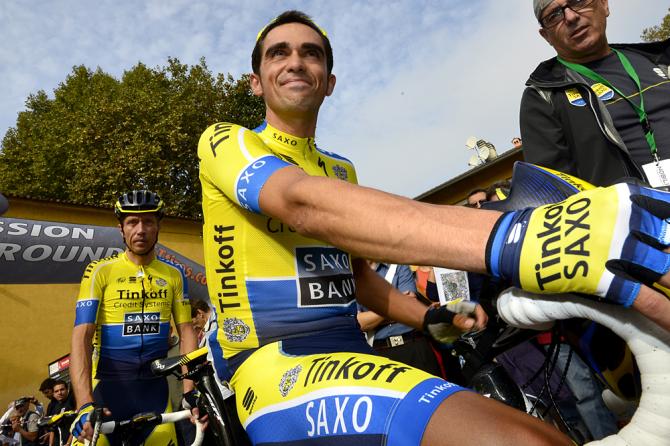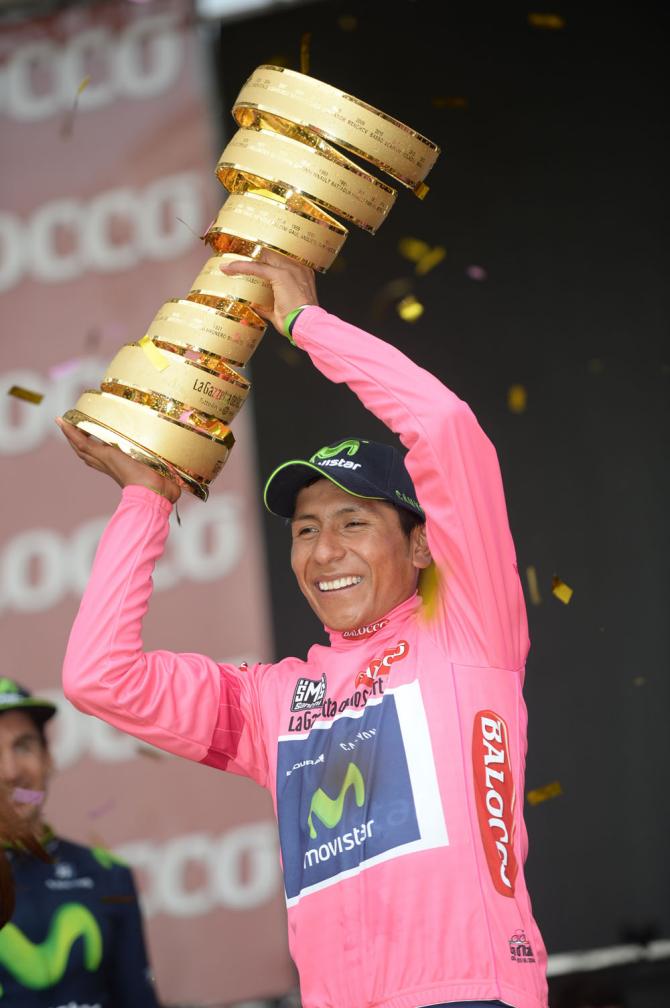2015 Giro d'Italia route takes shape
Mortirolo and Colle delle Finestre set to feature





Although the route of the 2015 Giro d’Italia will not be unveiled officially until the presentation in Milan on Monday afternoon, details on various aspects of the parcours have already filtered their way into the local Italian press.
The advance “skeleton” of the course that has emerged in recent weeks suggests that the Giro will feature fewer summit finishes than this year’s race and ought to prove more conducive to Alberto Contador’s planned Giro-Tour double than his last attempt in 2011.
As ever when tracing the possible route of a Grand Tour, there is already a handful of concrete information. In July, RCS Sport announced that the Giro will begin with an 18km team time trial in San Remo on May 9. The following day sees a sprinter’s stage from Albenga to Genoa, while stage 3 takes the peloton along the Ligurian coast, through the Cinque Terre and to a hilltop finish at Biassa, above La Spezia.
RCS has also already confirmed that stage 15 will feature the climbs of La Fricca and the Passo Daone before a summit finish at Madonna di Campiglio – the race’s first visit since Marco Pantani’s fateful haematocrit test in 1999 – while it seems certain that the finish of the Giro will return to Milan after a two-year absence.
Treviso time trial
Working off those fixed points, the overall direction of the Giro takes shape. After the opening exchanges in Liguria, stage 4 is widely rumoured to bring the race from Forte dei Marmi – where Tinkoff-Saxo owner Oleg Tinkov maintains a summer home – to a summit finish at Abetone, made famous by Fausto Coppi and last conquered by Francesco Casagrande in 2000.
The Giro will continue southwards as week one progresses, with the southernmost point expected to be a finish (and subsequent start) at Torre del Greco, on the outskirts of Naples, as reported by PositanoNews.it. A subsequent stage finish at San Giorgio del Sannio seems certain although a proposed leg to Termoli seems to have come to nothing due to a lack of local funding.
Get The Leadout Newsletter
The latest race content, interviews, features, reviews and expert buying guides, direct to your inbox!
In any case, the race convoy will transfer northwards on the first rest day on May 18, before stages through Emilia-Romagna brings the Giro into the Veneto, where a probable stage 13 time trial starting in Treviso will honour the late Giovanni Pinarello, who died last month. La Tribuna di Treviso suggests that the time trial could be up to 50 kilometres in length.
When announcing its candidacy to stage the 2020 World Championships last week, Vicenza confirmed that it will also host a Giro finale next year, with a hilltop finish on nearby Monte Berico slotting into the route, probably the day after the Treviso time trial. The aforementioned stage to Madonna di Campiglio brings the curtain down on week two.
Mortirolo, Finestre and Milan finish
As ever at the Giro, the final week is likely to be a mountainous one. A stage finish at Aprica by way of the mighty Mortirolo has been reported by ApricaOnline.it, and though the site suggests it will take place on the penultimate day, it seems far more likely to be appear on stage 16, after the second rest day. In any case, it was little wonder that Contador availed of the recent Rhxdue gran fondo to sample the climb once again, which, as in 2010, will reportedly be tackled from Sonticolo.
A jaunt across the Swiss border to Lugano – whose residents include both Contador and Vincenzo Nibali – is also on the cards for the final week, before a mountainous double header in Piedmont. The Corriere di Novara anticipates a summit finish at Cervinia – where Andrey Amador won in 2012 – on the final Friday. The tappone arrives on the penultimate day, where in an echo of the dramatic denouement of the 2005 Giro, the race returns to the dirt roads of Colle delle Finestre en route to a finish atop Sestriere.
Turin had held hopes of hosting the finale of the Giro, a nod to its status as European Capital of Sport for 2015, but La Stampa reports that the cost of hosting the finale of the corsa rosa has proved a sticking point for the city. Instead, the final stage of the Giro on May 31 will begin in Turin and finish in Milan, in the shadow of the Castello Sforzesco. After a two-year impasse, Milan’s hosting of Expo 2015 seems to have encouraged the city council to welcome the Giro back once again.
The breakdown
Piecing together the Giro route beforehand is never an exact science and there are sure to be surprises when the curtain is raised in Milan on Monday, but the general shape of the percorso seems relatively stable.
As in 2014, the principal difficulties appear to be shoehorned into the second half of a the race, and RCS Sport will no doubt hope that the – relatively – benign opening convinces Vincenzo Nibali of the feasibility of attempting the Giro-Tour de France double. In any case, the touted route should not deter Alberto Contador from his existing plans to tackle both races.
The number of time trialling kilometres should be lower than 2014, when the team time trial, Barolo time trial and Monte Grappa mountain test added up to a total in excess of 90 kilometres. With just the opening TTT and the Treviso time trial rumoured this time around, the total number of time trial kilometres is expected to be fewer than 70.
After nine summit finishes at this year’s Giro, the demands – on paper, if not in practice – seem to be slightly reduced for 2015, with five mountaintop finishes and two more hilltop finales on most of the projected routes in circulation in Italy.
Of course, the finishes only tell half the story – stage distances and the number of climbs on each mountain stage have yet to be clarified, and it will be interesting, too, to see if RCS Sport opts to avoid extreme altitudes and the inherent risk of bad weather, which so affected the race in 2013 and 2014.